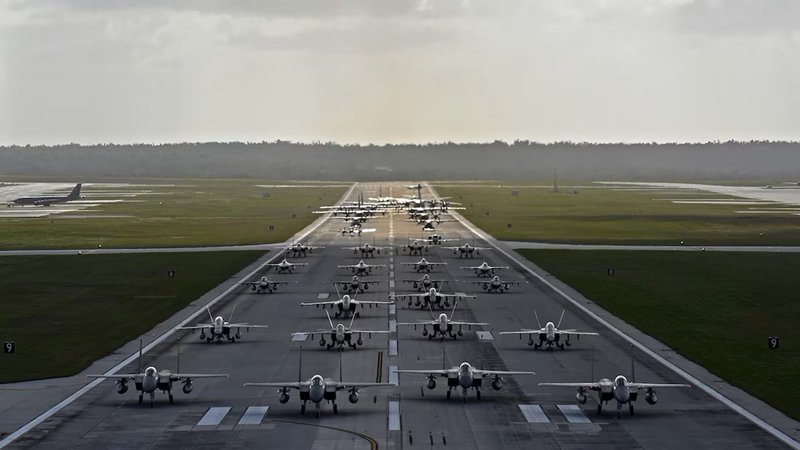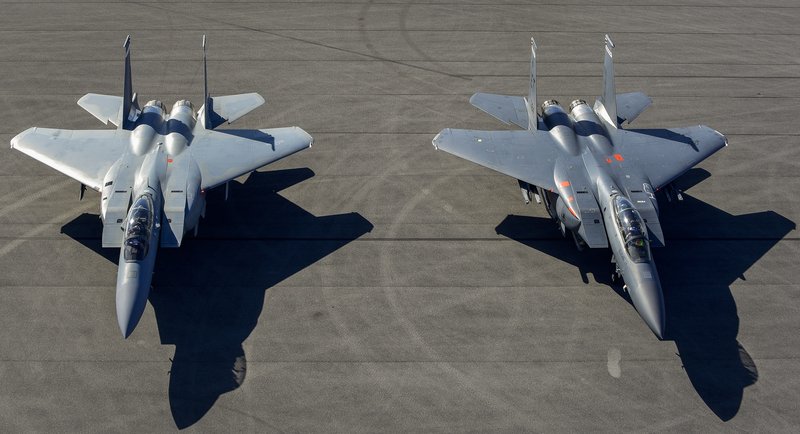Strategic shake-up – plotting a new course for the USAF
Revealed last month, a proposed new strategic realignment of the USAF, evidently with senior leadership backing, aims to make the service fit for great power competition. Are the changes the right ones, and how hard will they be to achieve?
In late 2023, the USAF released a new electronic warfare (EW) strategy outline. This included creation of new sub-units for the 2021-established 350th Spectrum Warfare Wing, a formation tasked with development and improvement of EW capability within the service... Continues below
Newsletter Sponsors:

Above: The proposed new structure will break many of the traditional ties between an AFB and its wings, with the latter potentially rebranded as ‘units of action’. (Photo: USAF)
The EW space has been traditionally one that air forces see as a high priority. The distance at which aircraft operate and their dependence on various sensors and communications systems make them an obvious target for hostile action.
This factor has since become as important for naval and ground forces, not least due to the interdependence on which operations are now usually based. Space, with concerns over GPS jamming and other anti-satellite capabilities, has also become a new zone of conflict alongside cyber.
The new USAF units are intended to bridge these disparate but increasingly overlapping areas to the benefit of the wider US military. ‘Non-kinetic’ effects – ie reducing the use of physical weapons – will be a hallmark.

But it didn’t end there. In February this year at the AFA Warfare Symposium, a wider strategic reassessment was discussed under the title of ‘Reoptimizing for Great Power Competition’, a heading that leaves little doubt as to the objective.
Indeed, at the symposium China was mentioned directly rather than merely referred to as a ‘pacing competitor’. The tone was rather aggressive and of the si vis pacem, para bellum type. However, it was also offered as a work in progress rather than a mature foundation on which future decisions will be based.
In ‘philosophical’ terms, the objective is clearly to reduce command levels and repetition, particularly between geographic and role-focussed entities. Thus, US Air Forces in Europe – Air Forces Africa, Pacific Air Forces and Air Force Global Strike Command will have less ‘distractions’ to worry about and instead focus on their ability to deliver effect.
This primacy of output rather than input is evidenced by moving away from traditional named and numbered units, and towards a flexible ‘as-required’ stacking of complimentary assets and capabilities.
This has a long and not always successful heritage, but as seen above in the EW field, it is vital as delineation between platform, capability and mission type is only becoming more fluid.
At the highest levels, salient points include formation of a Space Futures Command, while Air Force Cyber Command will now be ranked as an equal to the other major commands. Concurrently, Air Combat Command is to be responsible for force-wide support and the management of major exercises.

The overarching Air Force Materiel Command will also now be tasked with an ‘information dominance’ role alongside ‘nuclear systems’ and ‘integration’, though ‘lifecycle management’ was moved sideways. Finally, Air Education and Training Command will become Air Development Command and widen its remit to new jobs and improved career progression across all roles.
To those without a deep knowledge of USAF hierarchies, this may not seem like much of a rationalisation, but the direction at least is quite significant, while the seniority of those on stage at the symposium suggested it has undergone significant consideration and has hefty ‘political’ backing.
At a lower level, the rationalisation is perhaps easier to understand. The traditional tying of combat wings to bases will be reduced (elimination is maybe a step too far), with the former concentrating on jobs and the latter on job support.
In an echo of the new strategic structure, wings will be categorised as ‘deployable’, ‘in-place’ and ‘support’. These are intended to use the Agile Combat Employment principle of ad-hoc minor or major operations requiring support with little warning and hence further reinforces the general trend of the new strategy.
Other articles in this newsletter:
Rotary reversal – what does FARA cancellation mean for the US Army and its NATO allies?
In a surprise move – and a worrying potential jinx – it was suggested that wings will be collectively (re)named ‘units of action’. Anyone familiar with the unsuccessful US Army Future Combat Systems programme of the 1990s will recall that the ‘unit of action’ structure was a key part. Hopefully for the DoD, history will not repeat.
As has been noted by many commentators, restructuring efforts are a familiar facet of major military organisations. The USAF has often made various strategic statements, unveiled plans, discussed restructuring budgets, changing aircraft orders, merging or ending major commands.
As noted above, this effort was caveated as being an intention rather than a finished concept, and the speakers at AFA were senior enough to drive much of this.
One admission, though, was the absence of any additional budget for 2024-25 and hence the need to support this effort by shifting money sideways. Given the current crop of programmes over which uncertainty remains (F-35, F-15EX, KC-46, T-7, new UCAVs, new-generation combat aircraft etc), moving funds around may prove at best difficult and more likely a severe limiting factor on the entire concept.

Above: The restructuring will have to be funded from existing budgets, complicating a landscape where programmes such as the F-15EX are already competing for procurement dollars. (Photo: USAF)
As espoused, the new strategy makes nominal sense. As seen in the EW element, separation of capability is become extremely difficult, while the energy required for focus on primary responsibilities is growing.
Streamlining and simplifying chains of command, responsibility and activity should offer increases in both economy and effectiveness. Shortsighted stovepiping and isolated repletion of assets has always been a foe of militaries (and institutions in general).
Any conflict with China would stretch US forces through the simple tyranny of distance, now increasingly a multi-dimensional headache rather than one of range and concentration. But the new organisation, if realised, will doubtless require a significant degree of stress-testing and evolution before it can be judged a success.
Don't want to miss out on future Decisive Edge content? Make sure you are signed up to our email newsletters.












